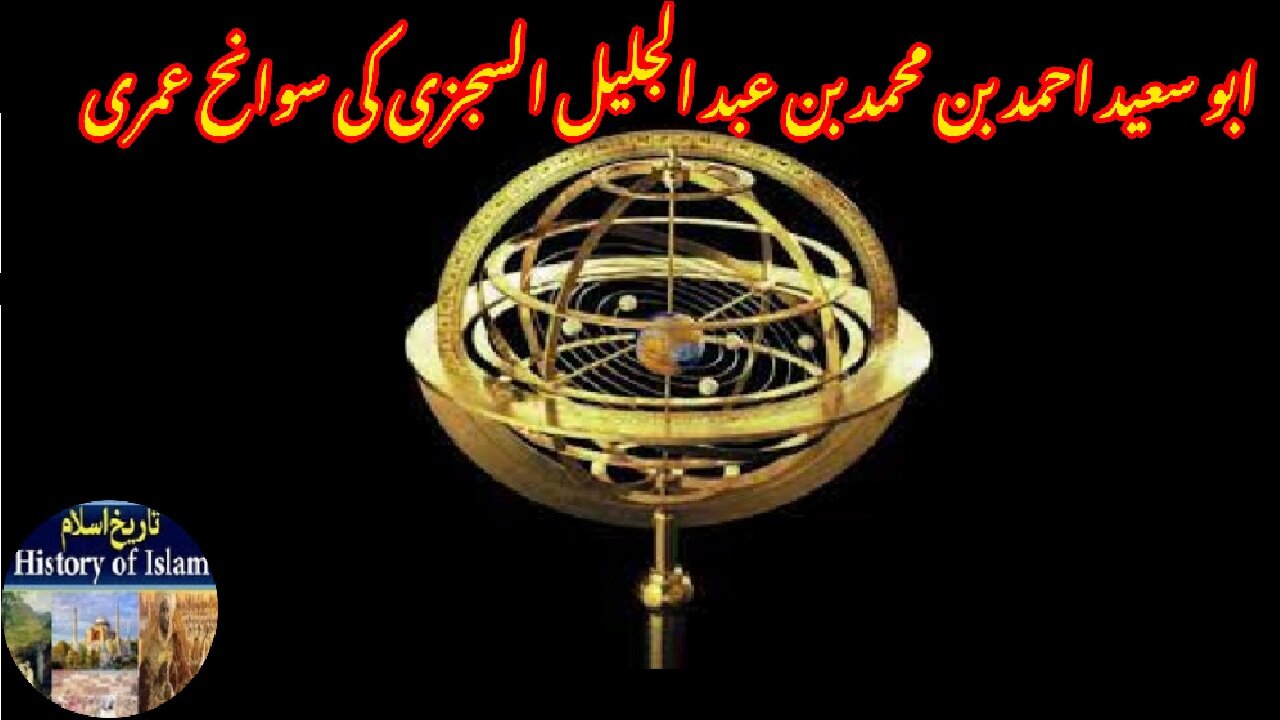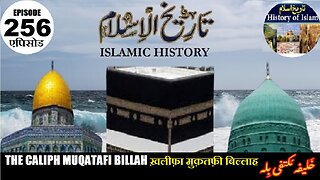Premium Only Content

Biography of Abu Sa'id Ahmed al Sijzi ابو سعید احمد بن محمد بن عبد الجلیل السجزی کی سوانح عمری۔
@islamichistory813 #abusaid #ahmed #ibnmohammed #ibnabdaljalil #alsijzi #biography #islamichistory #islamicscholars #islam
Biography of Abu Sa'id Ahmed ibn Mohammed ibn Abd al Jalil al Sijzi.
Assalamu Alaikum, sisters, brothers, friends and elders, we welcome you to a series of videos on Muslim heritage and Islamic scholars. and today in this video we will describe biography of Abu Sa'id Ahmed ibn Mohammed ibn Abd al Jalil al Sijzi.
Abu Sa'id Ahmed ibn Mohammed ibn Abd al Jalil al Sijzi was a distinguished Islamic scholar, mathematician, and astronomer of the tenth century whose intellectual contributions left a lasting impact on the development of science in the Islamic world. He was born around the year 945 in the city of Sijistan, also known as Sistan, which is located in present day eastern Iran and southwestern Afghanistan. The region was a vibrant center of culture and scholarship during his time, attracting thinkers and scientists who contributed to the flourishing of knowledge under the Abbasid caliphate. Al Sijzi grew up in an environment where the pursuit of knowledge was deeply respected, and from an early age he showed exceptional interest in mathematics and astronomy, fields that were highly valued in Islamic civilization. His early education in Sijistan laid the foundation for the remarkable career he would go on to achieve.
Al Sijzi devoted much of his life to the study of geometry, astronomy, and mechanics. He is best remembered for his innovative work in designing and refining astronomical instruments. One of his most notable achievements was the invention of the "al Zawraq," a special type of astrolabe that was unique because it was based on the idea that the Earth rotates on its axis. This concept, centuries before it became widely accepted in Europe, demonstrated the advanced level of scientific thought among Muslim scholars of his era. His recognition of the Earth’s rotation was a remarkable insight, and although it was not universally accepted at the time, it shows the depth of his understanding of celestial mechanics. His writings reveal a profound grasp of mathematical precision and observational astronomy, which were crucial for both scientific advancement and religious practices such as determining prayer times and the direction of the qibla.
In addition to his work on instruments, al Sijzi authored many treatises on geometry and mathematics. His works often involved solving complex geometric problems and proposing innovative methods of calculation. These writings circulated widely in the scholarly community and influenced later generations of scientists in both the Islamic world and beyond. His intellectual contributions reflect the broader Golden Age of Islam, a period when scholars were translating, preserving, and expanding upon Greek, Indian, and Persian knowledge. Al Sijzi was a bridge between earlier traditions of learning and the growing body of original contributions made by Muslim thinkers. His work was highly respected by his contemporaries, and he often engaged in correspondence and scholarly exchanges with other leading figures of his time.
Abu Sa'id al Sijzi passed away in the year 1020, most likely in Baghdad, which had by then become one of the greatest centers of learning in the world through the renowned House of Wisdom. His death marked the loss of a remarkable intellect, but his legacy continued through his writings and the instruments he designed. Scholars continued to study his works for generations, ensuring that his insights remained part of the rich scientific heritage of Islam. His contributions not only advanced mathematics and astronomy but also served practical purposes in the lives of Muslims who relied on precise astronomical knowledge for religious observances.
The shrine of al Sijzi is traditionally believed to be located in his native region of Sijistan, where his memory has been preserved with deep respect. The shrine is a modest structure, reflecting the humility of a man who devoted his life to the pursuit of knowledge rather than worldly wealth. Over the centuries, it has become a site visited by admirers, students, and historians who honor his role in advancing science. The shrine stands as a testament to his enduring influence and serves as a reminder of the intellectual vibrancy of Sijistan during the height of the Islamic Golden Age. Local communities have continued to preserve the memory of al Sijzi, ensuring that his name and works remain alive in cultural and scholarly traditions.
The history of the shrine is intertwined with the broader history of Islamic scholarship in the region. It has long been considered a symbol of pride for the people of Sijistan, who regard al Sijzi as one of their most famous sons. The structure has been maintained over generations and continues to attract those interested in the history of science and Islam. Visitors come not only to pay their respects but also to reflect on the harmony between faith and knowledge that al Sijzi represented. His shrine embodies the legacy of a scholar who believed in the power of observation, reason, and dedication to both religion and science. In this way, Abu Sa'id al Sijzi’s life and work continue to inspire modern readers and remind us of the profound contributions of Islamic civilization to human knowledge.
With this, we ask for your permission until tomorrow and tomorrow we will narrate biography of Halima Xudoyberdiyeva Voice of Resistance in Muslim Uzbekistan. we will also narrate the history of her shrine. Finally, we pray to Allah Almighty to grant us the ability to act on the Quran and Hadith, Amen.
Allah Hafiz
#history #scholars #hadith #quran #sunnah #islamic #legacy #heritage #wisdom #fiqh #knowledge #tafsir #faith #guidance #islamicworld #muslim #islamiclegacy #imams #islamiccivilization #goldenage #truth #ummah
==================================
-
 9:23
9:23
ISLAMIC HISTORY
1 hour agoIslamic History Episode 256 The Caliph Muqatafi Billah ख़लीफ़ा मुक़तफ़ी बिल्लाह خلیفہ مکتفی بلہ
-
 1:00:30
1:00:30
VINCE
2 hours agoThe Shutdown Is Even Worse Than You Thought | Episode 146 - 10/14/25
50.8K51 -
 LIVE
LIVE
LFA TV
14 hours agoLIVE & BREAKING NEWS! | TUESDAY 10/14/25
3,638 watching -
 1:36:43
1:36:43
Dear America
2 hours agoMSM In PANIC Over New Pentagon Rules!! | Biden And Clinton Thank Trump For Peace In Middle East!!
75.3K33 -
 LIVE
LIVE
Badlands Media
8 hours agoBadlands Daily: October 14, 2025
4,144 watching -

House Republicans
1 hour agoHouse Republicans Leadership Stakeout
770 -
 16:25
16:25
marcushouse
3 hours ago $0.63 earnedSpaceX Starship Flight 11 Launch EXPLAINED! 🚀🔥
4.44K8 -
 1:03:54
1:03:54
Chad Prather
17 hours agoThe Gospel That Can’t Save You: Exposing the Lie of Self-Help Christianity
44K25 -
 30:40
30:40
Tucker Carlson
14 hours agoThe 9/11 Files: From Cover-up to Conspiracy | Ep 4
71.4K59 -
 1:57:37
1:57:37
The Chris Salcedo Show
14 hours ago $4.99 earnedAfter What They've Done, Mockery Is The Best They Deserve
28.4K2